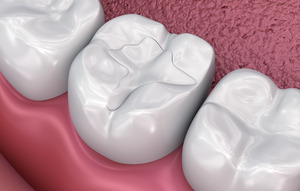
One of the main reasons that it’s useful to have a dentist on your side is that it can be difficult to tell what’s going on with your teeth by feeling alone. There are all kinds of issues you could have with your smile and telling them apart on your own is a challenge.
For example, if you feel a small twinge of pain, you might wonder whether it’s temporary or could be worth a dental filling. A dentist will obviously be able to tell you more if you visit them, but if you want to know about how to figure that out on your own, here’s some information you might find useful.
How Do I Know If I Need a Dental Filling?
Knowing if you need a dental filling often starts with recognizing symptoms of tooth decay or damage. One of the most common signs is tooth pain or sensitivity. If you experience persistent or sharp pain when eating, drinking, or even when your tooth is exposed to air, it could indicate decay. Sensitivity to hot, cold, or sweet foods and beverages is also a typical symptom. Additionally, visible holes, pits, or dark spots on your teeth can be signs of cavities that may require fillings. Flossing issues, such as difficulty getting floss between certain teeth or the floss tearing, might also be due to decay or damage between the teeth. Frequently getting food caught in specific spots, despite regular brushing and flossing, can indicate cavities as well. Lastly, if you feel rough edges on your teeth with your tongue or notice chips and breaks, it might mean you need a filling.
If you notice any of the above issues, it never hurts to reach out to a dentist. They’ll be able to tell you in greater detail what your problem could be, and they can treat your cavity if you have one.
What Does Getting a Filling Entail?
Getting a dental filling generally involves several steps. First, your dentist will examine your mouth and may take X-rays to determine the extent of the decay or damage. To ensure comfort, a local anesthetic is usually applied to numb the area around the affected tooth. The dentist will then use a drill or laser to remove the decayed portion of the tooth. Once the decay is removed, the cavity is cleaned to eliminate any bacteria and debris. The dentist fills the cleaned cavity with a filling material, which can be composite resin, amalgam, gold, or porcelain, and the material is shaped to fit the tooth. For composite fillings, a special light may be used to harden the material quickly. Finally, the filling is polished to ensure it is smooth and fits well with your bite.
Routine dental check-ups can help identify the need for fillings before severe symptoms develop. These check-ups are crucial for maintaining oral health and catching potential problems early, making the process of getting a filling simpler and less stressful.
About Our Practice
At White Clay Dental Associates, we want to be a dental practice you’ll be happy to trust with your family’s oral health needs. That’s why we ensure that our care is truly excellent, and more than that, always treat our patients with the upmost integrity and respect. Whenever you’re worried that your tooth is decayed or if you’re dealing with a serious toothache, we’ll give you the care that you need to feel your best.
If you have any questions about a dental filling, we can be reached at our website or by phone at (302) 731-4225.
